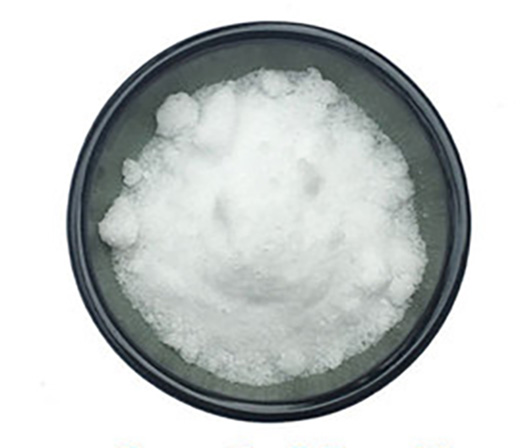Brief Introduction of Thymol
Introduction
Thymol are white crystals or powders with a spicy odor, 5-methyl-2-isopropylphenol[1]. The molecular formula of thymol is C10H14O, the molecular weight is 150.218, the density is 0.965 g/mL at 25 °C (lit.), the melting point is 48-51 °C (lit.), the boiling point is 232 °C (lit.), the flash The point is 216 °F and the water solubility is 0.1g/100 mL (20 ºC). Thymol is the main monoterpene phenol present in essential oils, which are isolated from plants belonging to the Lamiaceae family, as well as other plants such as Verbena, Scrophulariaceae, Ranunculaceae, and others. Thymol has antioxidant, anti-inflammatory, antibacterial and antifungal properties. Thymol is slightly soluble in water and easily soluble in organic solvents such as glacial acetic acid, paraffin oil, ethanol, ether, chloroform, ethyl acetate, carbon disulfide and olive oil.

Picture 1 Thymol white crystals
Stability
Stable under normal temperature and pressure. It is forbidden to mix with antipyretic ice, antipyrine, camphor, strong oxidants, menthol, quinine sulfate, salicylate, ethane, and nitroso ether. Thymol will slowly become liquid when placed with solid fragrances such as camphor and menthol. Thymol is present in Burley tobacco leaves and smoke. Thymol occurs naturally in cheese, papaya fruit, black tea, green tea, thyme oil, oregano oil, clove basil oil[2].
Operation precautions
Store thymol in an airtight container. Store in a dry, cool and ventilated environment. Ensure insulation and isolation from sources of ignition during storage. Isolate reactants. Warning signs are marked on the outside of the product.
Toxicity
The routes of entry of thymol include inhalation, ingestion, and thymol can affect the central nervous system. Irritating to skin, eyes, respiratory tract. cough. Shortness of breath. Red, itchy, sore skin. Abdominal nausea, vomiting, pain. The central nervous system is overactive. coma, convulsions. Liver and kidney damage. In case of skin contact, remove clothing immediately and rinse with recommended cleaning media. seek medical attention. If eye contact occurs, immediately flush eyes with plenty of water with eyelids raised for at least 15 minutes. seek medical attention. If thymol is inhaled, quickly evacuate the scene to fresh air; if breathing stops, perform artificial respiration; if breathing is difficult, give oxygen. seek medical attention. If thymol is ingested, drink plenty of water, but do not give it to the unconscious, seek medical attention immediately.
Assay
Take about 0.1g of thymol, accurately weigh it, put it in a 250ml iodine bottle, add 25ml of 1mol/L sodium hydroxide solution, shake to dissolve, add 20ml of hot hydrochloric acid (1→2), shake well, and immediately titrate with bromine Liquid (0.05mol/L) is titrated to 1-2ml from the theoretical end point, heat the solution to 70-80℃, add 2 drops of methyl orange indicator solution and continue to titrate slowly until the red disappears, then add bromine titration solution (0.05mol/L). L) 2 drops, shake for about 10 seconds, add 1 drop of methyl orange indicator solution, shake, if the solution turns red, repeat the above steps to continue titration. Until one drop of methyl orange indicator solution is added, the red color disappears after shaking. Each 1ml of bromine titration solution (0.05mol/L) is equivalent to 3.755mg of C10H14O.
Identification
(1) Take about 0.2g of thymol, add 2ml of 2mol/L sodium hydroxide solution, heat to dissolve, add 0.2ml of chloroform, heat in a water bath, and it will turn purple.
(2) Take about 2mg of this product, add 1ml of glacial acetic acid to dissolve it, add 0.15ml of sulfuric acid and 0.05ml of nitric acid, it will appear blue-green.
(3) The infrared absorption spectrum of this product should be consistent with that of the reference substance (General Rule 0402)
Acidity check
Take 1.0 g of thymol, put it in a 100-ml conical flask with a stopper, add 20 ml of water, heat to boiling to dissolve, seal it tightly, cool it, and shake vigorously for 1 minute. After the thymol is crystallized out, filter it and take the filtrate. 5ml, add 0.05ml of methyl red indicator solution and 0.05ml of 0.01mol/L sodium hydroxide solution, it will turn yellow.
Solution clarity and color check
Take 1.0g of thymol, add 10ml of 2mol/L sodium hydroxide solution, shake to dissolve, and check according to law (general rules 0901 and 0902), the solution should be clear and colorless. If it is turbid, compared with No. 4 turbidity standard solution (general rule 0902 first method), it should not be thicker; if it develops color, compared with orange-red No. 2 standard colorimetric solution (general rule 0901 first method), it should not be darker.
Reference
1 Zhao Yiduo, Hu Bo, Li Pengcheng, Sun Zhongze, Wang Li, Qin Shunyi, Shao Hua. Effects of thymol on growth performance and immune function of laying chicks[J].China Livestock and Poultry Breeding Industry, 2022,18(01) :169.
2 Yang Kang, Chen Jian, Xin Aijing, Cai Jinxia, Shi Zhiqi, Yang Lifei. The mechanism of action of thymol against Botrytis cinerea: PAO-H_2O_2 system [J]. Chinese Journal of Applied Ecology, 2020,31(07):2441-2448.
Related articles And Qustion
See also
Lastest Price from Thymol manufacturers

US $1200.00-1100.00/ton2025-10-31
- CAS:
- 89-83-8
- Min. Order:
- 1ton
- Purity:
- 99%
- Supply Ability:
- 1000T/M

US $0.00/kg2025-05-07
- CAS:
- 89-83-8
- Min. Order:
- 1kg
- Purity:
- 0.99
- Supply Ability:
- 1000kg



